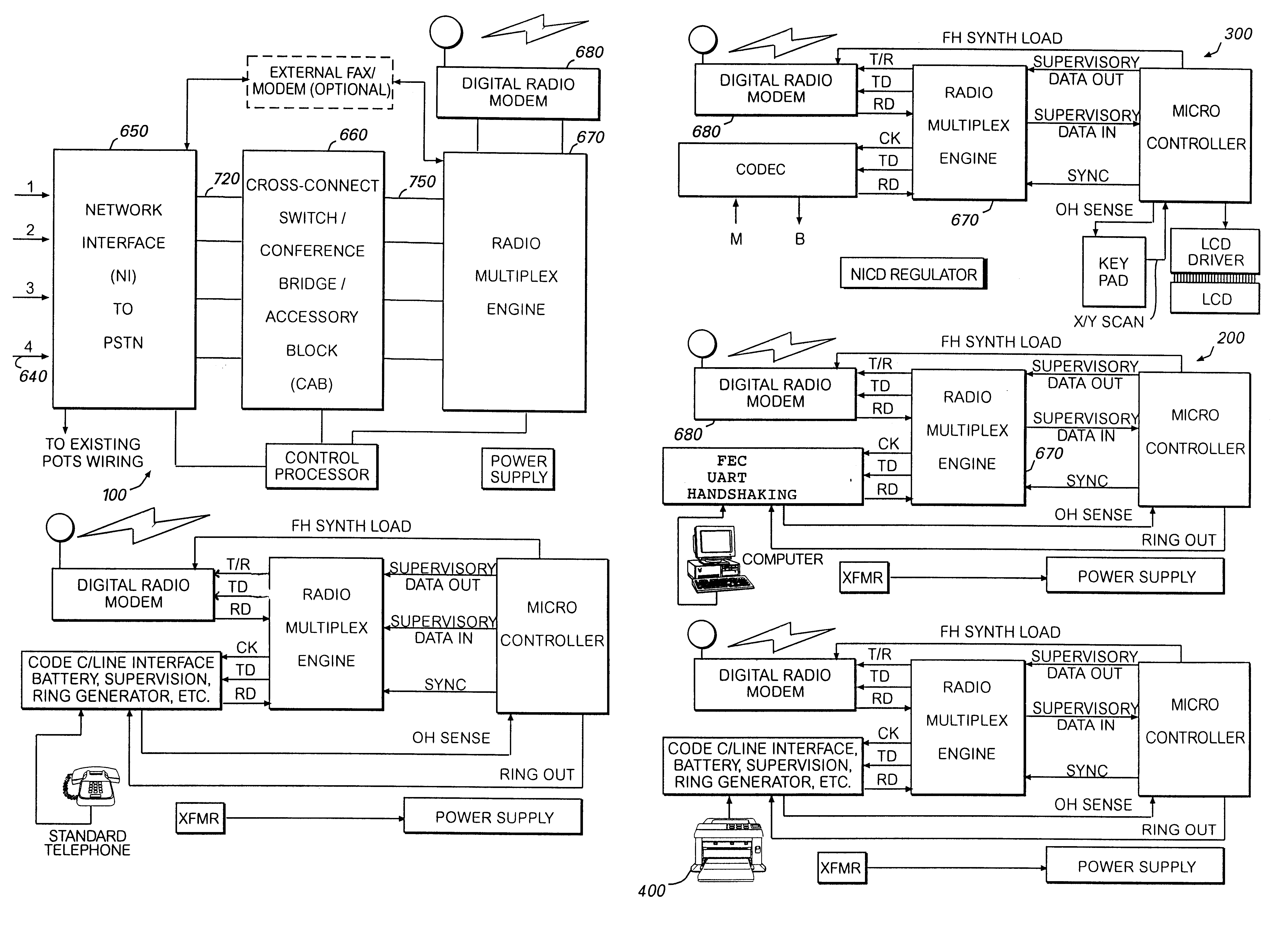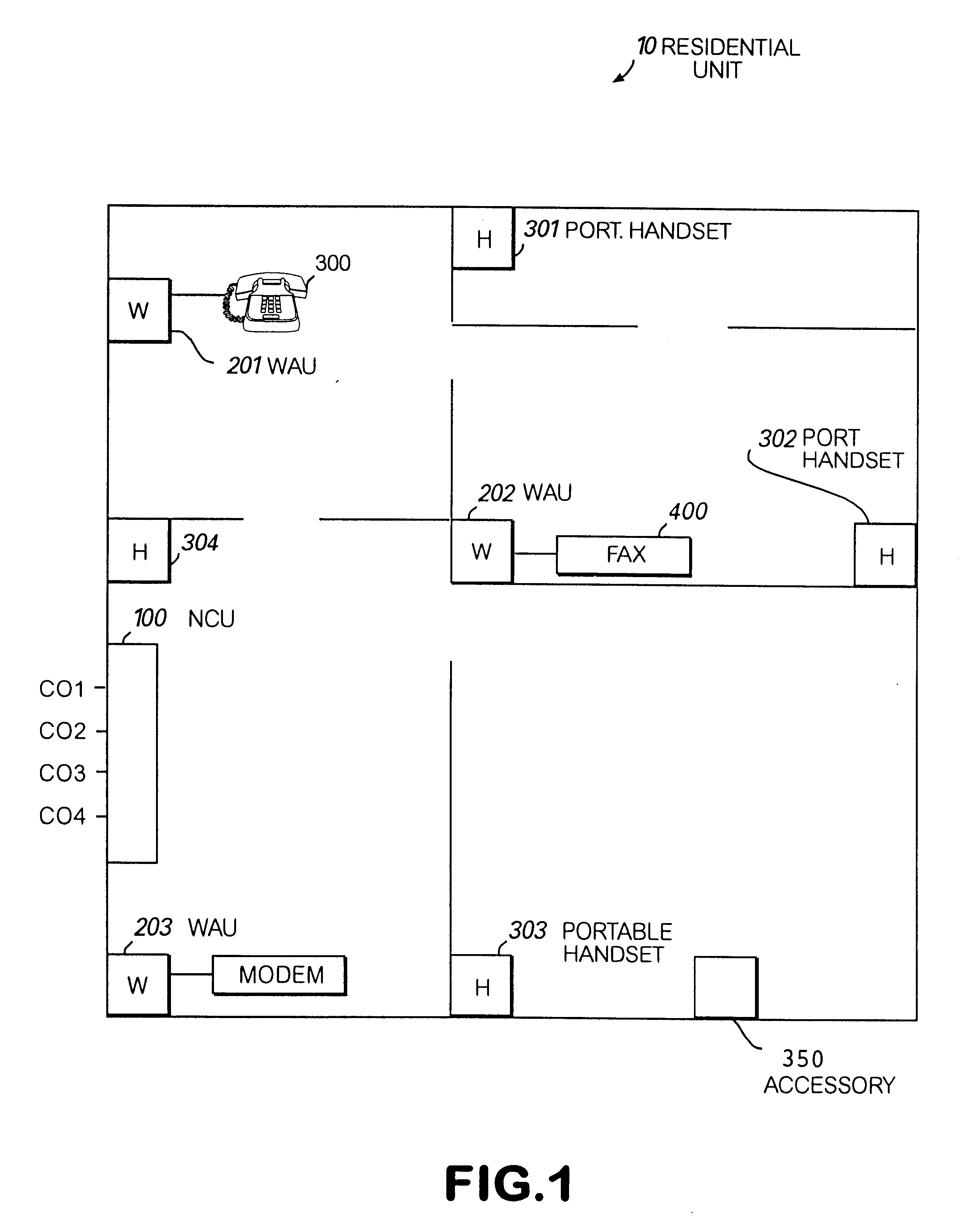Communications webs with personal communications links for PSTN subscribers
a technology of personal communications and communications links, applied in the field of communication webs with personal communications links for pstn subscribers, can solve the problems of physical wiring plants or mediums, present or future, permanent physical limitations of residential wiring plants, and insufficient plant capacity for the requirements of the requirement,
- Summary
- Abstract
- Description
- Claims
- Application Information
AI Technical Summary
Benefits of technology
Problems solved by technology
Method used
Image
Examples
example 2
Another system according to the present invention is shown in FIGS. 13A and 13B with two incoming POTS lines and an ISDN line. POTS line 1 is programmed in CAB 660 of Network Control Unit 100 to ring through and connect to LCD handset 300. POTS line 2 is programmed to ring through and connect to Wireless Access Units number 1 and number 2, which in turn connect to the standard telephone and a fax machine, respectively. The ISDN line is programmed to connect to Wireless Access Unit number 3 and thus to a computer via a serial port. Again, the lines may be programmed to connect to various handsets 300 and Wireless Access Units 200 as needed as the user desires new or additional services or adds other devices. With the existing devices shown in FIGS. 13A and 13B, for instance, the user could program CAB 660 to connect POTS line 1 to handset 300 and Wireless Access Units 1 and 2 in order to eliminate the second POTS line. Similarly, line 1 could be designated the voice line for connecti...
PUM
 Login to View More
Login to View More Abstract
Description
Claims
Application Information
 Login to View More
Login to View More - R&D
- Intellectual Property
- Life Sciences
- Materials
- Tech Scout
- Unparalleled Data Quality
- Higher Quality Content
- 60% Fewer Hallucinations
Browse by: Latest US Patents, China's latest patents, Technical Efficacy Thesaurus, Application Domain, Technology Topic, Popular Technical Reports.
© 2025 PatSnap. All rights reserved.Legal|Privacy policy|Modern Slavery Act Transparency Statement|Sitemap|About US| Contact US: help@patsnap.com



